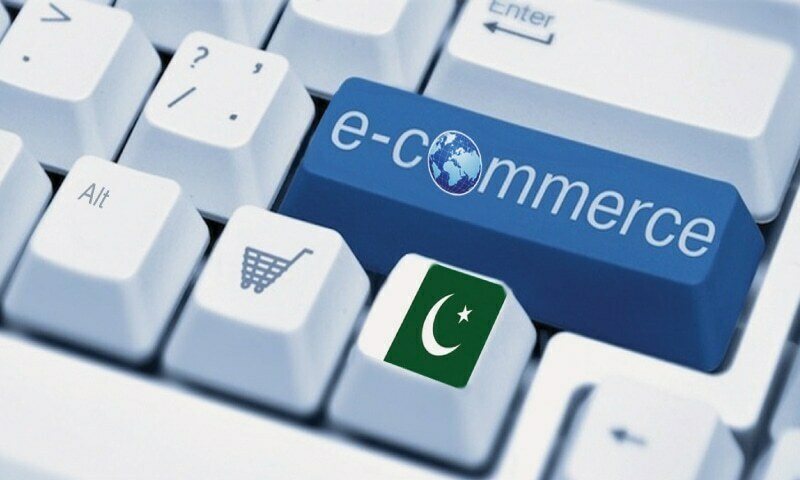
E-commerce has witnessed a remarkable surge in Pakistan in recent years, transforming the retail landscape and reshaping the way people shop. With the advent of technology and the growing penetration of the internet, the country has experienced a significant shift in consumer behavior, leading to a thriving E-commerce industry. In this article, we will delve into the factors driving the rise of E-commerce in Pakistan, explore the challenges and opportunities faced by the sector, and discuss the future prospects it holds.
E-commerce in Pakistan
E-commerce, or electronic commerce, refers to the buying and selling of goods and services over the Internet. In Pakistan, E-commerce platforms have gained popularity due to their convenience, accessibility, and competitive pricing. The rise of E-commerce has opened up new avenues for entrepreneurs, small businesses, and consumers alike.
Read More: The best eCommerce platform to Invest in 2023?
Historical context and growth of E-commerce
The growth of E-commerce in Pakistan can be attributed to several factors. Initially, limited internet connectivity and a lack of trust in online transactions posed challenges to the industry. However, advancements in technology, improved logistics infrastructure, and increased smartphone usage have paved the way for a digital revolution.
Factors contributing to the rise of E-commerce in Pakistan

One of the key drivers behind the rise of E-commerce in Pakistan is the increasing internet penetration rate. With more people gaining access to the internet, the potential customer base for online retailers has expanded significantly. Additionally, the widespread use of smartphones has made it easier for individuals to shop online anytime and anywhere.
Impact of technology and internet penetration
Technological advancements, such as mobile apps, secure online payment gateways, and personalized shopping experiences, have played a crucial role in the growth of E-commerce. Furthermore, the rise of 4G and 5G networks has facilitated faster and more reliable internet connections, making online shopping a seamless experience for consumers.
Changing consumer behavior and preferences
The shift in consumer behavior towards online shopping can be attributed to factors like convenience, time-saving, and access to a wide variety of products. Moreover, the increasing influence of social media platforms and the ease of comparing prices and reading reviews have empowered consumers to make informed purchasing decisions.
Government initiatives and policies supporting E-commerce
The Pakistani government has recognized the potential of E-commerce in driving economic growth and job creation. In recent years, it has taken several initiatives to promote the E-commerce sector, including the introduction of favorable policies, tax incentives, and the establishment of regulatory bodies to ensure consumer protection.
Challenges and opportunities in the E-commerce sector
While the E-commerce sector in Pakistan has witnessed significant growth, it still faces challenges. These include inadequate logistics infrastructure, payment security concerns, low digital literacy in certain segments of the population, and the need for effective dispute resolution mechanisms. However, these challenges also present opportunities for innovative solutions and market players to address them.
Key players and market competition
Several local and international players have entered the Pakistani E-commerce market, catering to the diverse needs and preferences of consumers. Some of the key players in the Pakistani E-commerce industry include Daraz, Yayvo, Homeshopping, and OLX. These platforms offer a wide range of products, competitive pricing, and convenient delivery options, intensifying the market competition and driving innovation.
Emerging trends in E-commerce
The E-commerce landscape in Pakistan is constantly evolving, with new trends shaping the industry. One prominent trend is the rise of social commerce, where businesses leverage social media platforms to promote their products and engage with customers directly. Influencer marketing has also gained traction, as brands collaborate with popular social media influencers to reach a wider audience and build trust.
E-commerce and the gig economy
The rise of E-commerce has also contributed to the growth of the gig economy in Pakistan. Individuals now have opportunities to work as freelancers, delivery partners, or online sellers, earning income on flexible terms. This has provided a source of employment and entrepreneurship for many, particularly the youth and those seeking alternative income streams.
E-commerce logistics and delivery services
Efficient logistics and reliable delivery services are crucial for the success of E-commerce platforms. In Pakistan, various logistics providers have emerged, offering specialized services tailored to the unique challenges of the local market. These providers ensure timely and secure delivery of products, enhancing customer satisfaction and trust in online shopping.
Security and trust concerns in E-commerce
While E-commerce offers convenience and accessibility, concerns related to security and trust remain. Consumers worry about the safety of their personal information and online transactions. To address these concerns, E-commerce platforms have implemented robust security measures, including encryption technologies, secure payment gateways, and customer support channels to resolve any issues promptly.
Social media and influencer marketing in E-commerce
Social media platforms have become powerful tools for E-commerce businesses in Pakistan. Platforms like Facebook, Instagram, and TikTok serve as marketing channels where brands can showcase their products, engage with customers, and drive sales. Influencer marketing has gained significant traction, as influencers with large followings endorse products and create brand awareness among their followers.
Future prospects and predictions for E-commerce in Pakistan
The future of E-commerce in Pakistan looks promising. With the continuous growth of internet penetration, advancements in technology, and supportive government policies, the industry is expected to expand further. The ongoing digitalization of traditional businesses and the rise of mobile commerce (m-commerce) will fuel the E-commerce boom, creating new opportunities for entrepreneurs and contributing to economic growth.
Conclusion
The rise of E-commerce in Pakistan has revolutionized the retail landscape, offering consumers a convenient and diverse shopping experience. With factors like increased internet penetration, changing consumer behavior, and supportive government initiatives, the industry has witnessed remarkable growth. However, challenges related to logistics, security, and trust must be addressed to sustain this growth and ensure a thriving E-commerce ecosystem.
FAQs
Q: Are E-commerce platforms secure for online transactions?
A: Yes, E-commerce platforms implement robust security measures, including encryption technologies and secure payment gateways, to ensure the safety of online transactions.
Q: Can I trust the quality of products purchased online?
A: Most E-commerce platforms have customer review systems in place, allowing you to gauge the quality and reliability of products based on other customers’ experiences.
Q: How can I start my own E-commerce business in Pakistan?
A: To start your own E-commerce business, you need to identify your target market, source products, build an online store, and establish reliable logistics and payment systems.
Q: What role do social media influencers play in E-commerce?
A: Social media influencers play a significant role in E-commerce by promoting products and brands to their large follower base. They help create awareness, build trust, and drive sales through their recommendations and endorsements.
Q: What are some emerging trends in the Pakistani E-commerce industry?
A: Some emerging trends include the rise of social commerce, the integration of augmented reality (AR) and virtual reality (VR) technologies for enhanced shopping experiences, and the increasing popularity of subscription-based models.











